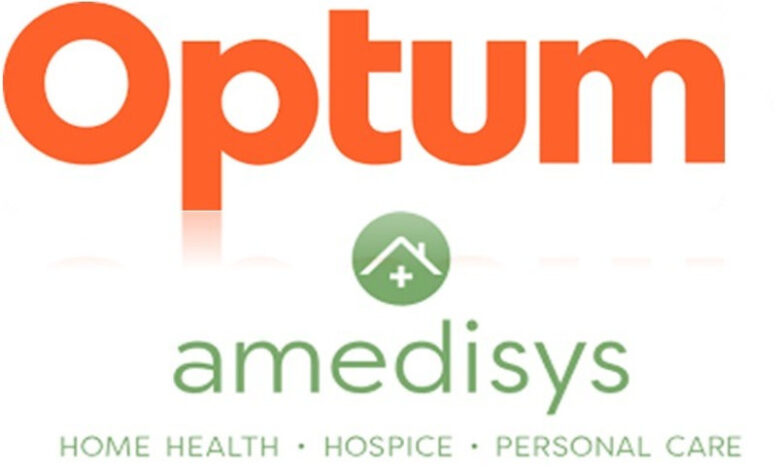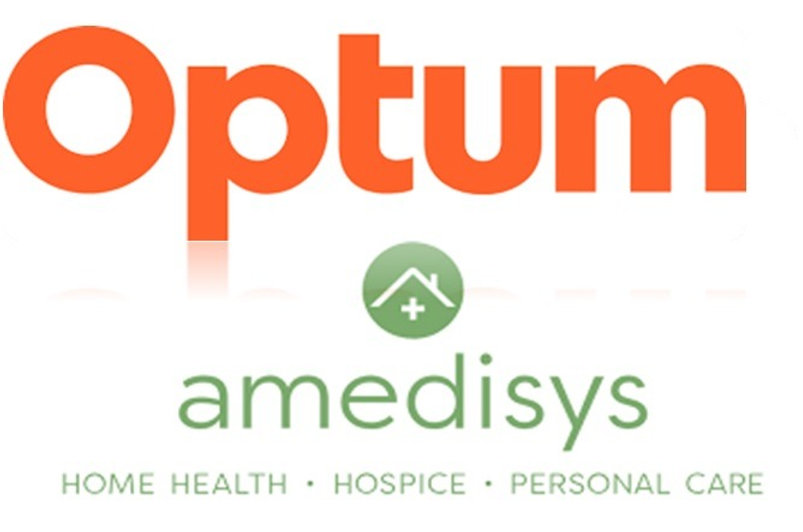
UnitedHealth Optums Amedisys Acquisition Bid
UnitedHealth Optum acquisition bid Amedisys – UnitedHealth Optum’s bid for Amedisys has sent ripples through the healthcare industry, sparking intense debate and speculation. This mega-merger, if successful, could fundamentally reshape the home healthcare landscape. Will it lead to improved patient care and greater efficiency, or will it stifle competition and drive up costs? Let’s dive into the details and explore the potential outcomes of this high-stakes acquisition.
This post will unpack the strategic rationale behind UnitedHealth’s move, examining the potential synergies and challenges. We’ll delve into the regulatory hurdles, the impact on shareholders and employees, and ultimately, how this deal could affect you, the patient, and the future of home healthcare.
Overview of UnitedHealth and Amedisys
UnitedHealth Group and Amedisys represent two distinct but interconnected players in the vast American healthcare landscape. This overview will examine their individual business models, market positions, and recent financial performance to better understand the context of a potential acquisition.
Business Models of UnitedHealth and Amedisys
UnitedHealth Group operates primarily through two segments: UnitedHealthcare, which offers a broad range of health insurance products, and Optum, which provides health services including pharmacy benefit management, data analytics, and technology-enabled healthcare services. Their business model focuses on managing the entire healthcare ecosystem, from insurance coverage to care delivery and data analysis. Amedisys, on the other hand, is a leading home health and hospice care provider.
Their business model centers on delivering skilled nursing, therapy, and other healthcare services directly to patients in their homes, focusing on post-acute care and end-of-life support.
Market Position of UnitedHealth and Amedisys
UnitedHealth Group is a dominant force in the health insurance market, consistently ranking among the largest health insurance providers in the United States. Their vast network and diverse product offerings allow them to reach a significant portion of the insured population. Amedisys holds a substantial market share in the home health and hospice care sector, known for its nationwide network and focus on providing high-quality care in the home setting.
Their position is strategically important given the increasing demand for home-based healthcare services driven by an aging population and a preference for less institutionalized care.
Financial Performance Comparison (Last 5 Years)
Comparing the financial performance of both companies requires looking at key metrics over the past five years. While precise figures require referencing SEC filings and financial news sources, a general comparison reveals that UnitedHealth Group demonstrates consistently strong revenue growth and profitability, reflecting its large scale and diversified business model. Amedisys, while smaller, has also shown growth, particularly in its hospice services, although its financial performance might be subject to greater fluctuations based on factors like patient volume and reimbursement rates.
The following table summarizes key metrics (note: these are illustrative and should be verified with actual financial statements):
| Metric | UnitedHealth (Illustrative) | Amedisys (Illustrative) |
|---|---|---|
| Annual Revenue (Billions USD) | Increasing steadily, consistently above $200B | Increasing, but significantly smaller scale (e.g., $4B – $6B range) |
| Net Income (Billions USD) | High and consistently profitable, in the tens of billions | Profitable, but at a significantly smaller scale |
| Revenue Growth (Annual %) | Generally positive, ranging from a few percent to double digits | Positive, with potential for higher growth compared to UnitedHealth |
| Debt-to-Equity Ratio | Generally low, indicating strong financial health | Should be compared to industry standards for appropriate context |
The Acquisition Bid: UnitedHealth Optum Acquisition Bid Amedisys
UnitedHealth’s bid for Amedisys represents a significant move in the healthcare landscape, aiming to integrate a leading home healthcare provider into its existing network. This strategic acquisition reflects a broader trend towards value-based care and the increasing importance of managing patients outside of traditional hospital settings. The rationale behind the bid is multifaceted, driven by both financial and strategic considerations.
Strategic Rationale for the Acquisition
UnitedHealth, a dominant player in health insurance and healthcare services, seeks to expand its reach into the rapidly growing home healthcare market. Acquiring Amedisys, a well-established home healthcare provider with a strong national presence, provides immediate access to a significant patient base and established infrastructure. This move aligns with UnitedHealth’s strategy of diversifying its revenue streams and offering a more comprehensive range of healthcare services.
The acquisition allows UnitedHealth to better manage the continuum of care, improving patient outcomes and potentially reducing overall healthcare costs. This vertical integration strengthens their position in value-based care models, where providers are rewarded for improved patient outcomes rather than simply the volume of services provided.
Synergies Between UnitedHealth and Amedisys
The combination of UnitedHealth’s vast insurance network and Amedisys’ extensive home healthcare capabilities creates significant synergies. UnitedHealth can leverage its existing relationships with physicians and hospitals to refer patients to Amedisys, streamlining the transition from hospital care to home-based services. Amedisys benefits from access to UnitedHealth’s data analytics capabilities, allowing for more efficient resource allocation and improved care coordination.
This integrated approach can lead to better patient outcomes, reduced readmission rates, and improved cost-effectiveness. For example, the combined entity could develop more sophisticated predictive models to identify patients at high risk of hospital readmission, allowing for proactive interventions through Amedisys’ home healthcare services.
Challenges and Risks Associated with the Acquisition
While the acquisition offers substantial potential benefits, several challenges and risks must be considered. Integrating two large organizations with different cultures and operational processes can be complex and time-consuming. Potential conflicts of interest may arise, requiring careful management to ensure fair and equitable treatment of all patients. Regulatory scrutiny is also a significant concern, as the acquisition could raise antitrust issues related to market dominance in certain geographic areas.
Successfully navigating these challenges will be crucial for realizing the intended synergies. For instance, integrating disparate IT systems could prove a significant hurdle, requiring substantial investment in time and resources. Furthermore, ensuring consistent quality of care across Amedisys’ geographically dispersed operations under UnitedHealth’s umbrella will be a key challenge.
Impact on Competition in the Home Healthcare Market
The acquisition of Amedisys by UnitedHealth could significantly alter the competitive landscape of the home healthcare market. The combined entity’s market share could increase substantially, potentially leading to reduced competition and potentially higher prices for consumers. Regulators will likely scrutinize the deal to assess its impact on competition and ensure that the acquisition does not stifle innovation or limit patient choice.
This could lead to protracted regulatory review and potentially impose conditions on the acquisition to mitigate anti-competitive effects. For example, the acquisition may necessitate divestitures of certain Amedisys operations in areas where the combined entity would hold excessive market power.
Regulatory and Legal Aspects
The UnitedHealth-Amedisys acquisition, while potentially lucrative for both companies, faces a complex regulatory landscape. Navigating the legal and antitrust hurdles will be crucial for the deal’s success. The sheer size of UnitedHealth and the significant market share implications necessitate a thorough examination of potential conflicts.
Antitrust Concerns
The primary regulatory concern centers on antitrust issues. The merger of a massive healthcare conglomerate like UnitedHealth with a major home health provider like Amedisys could raise concerns about reduced competition, potentially leading to higher prices and decreased quality of care for consumers. The Department of Justice (DOJ) and the Federal Trade Commission (FTC) will scrutinize the deal to determine if it substantially lessens competition in relevant geographic markets.
This analysis will likely focus on the overlap in services offered by the two companies and the market share they collectively hold. For example, if the combined entity controls a disproportionately large share of home health services in specific regions, the regulators may view this as anti-competitive. Past mergers involving large healthcare companies have faced similar scrutiny, with some being blocked or requiring significant divestitures to proceed.
The DOJ’s decision in the proposed merger of Anthem and Cigna, for example, provides a relevant precedent.
Regulatory Hurdles and the Review Process
The regulatory review process for this acquisition is likely to be lengthy and multifaceted. Both the DOJ and the FTC have the authority to investigate and potentially challenge the merger. The timeline typically involves several stages: initial notification to the relevant agencies, a period of investigation and data collection by the agencies, and potentially, negotiations to address antitrust concerns.
This process could take anywhere from several months to over a year, depending on the complexity of the case and the willingness of UnitedHealth to address the agencies’ concerns. The agencies will carefully examine market concentration, the potential for increased prices, and the overall impact on consumers. If significant antitrust issues are identified, the agencies may require UnitedHealth to divest certain assets or operations to mitigate the competitive harm.
This could involve selling off specific Amedisys branches or service lines in certain regions.
Key Legal Arguments For and Against the Acquisition
UnitedHealth will likely argue that the acquisition will lead to improved efficiency, innovation, and ultimately, better patient outcomes. They might emphasize potential synergies between the two companies, such as improved coordination of care and reduced administrative costs. Furthermore, they might argue that the combined market share doesn’t represent a significant threat to competition, given the presence of other significant players in the home health market.
Conversely, opponents of the merger might argue that the acquisition will stifle competition, leading to higher prices for consumers and reduced choice in home healthcare providers. They may point to evidence of market concentration and the potential for UnitedHealth to leverage its market power to negotiate unfavorable terms with suppliers and payers. The outcome will hinge on the persuasiveness of these competing arguments and the weight given to them by the regulatory agencies.
Impact on Amedisys Shareholders and Employees
The UnitedHealth Optum acquisition of Amedisys, if successful, will significantly impact both its shareholders and employees. While the potential for increased shareholder value is a primary driver of the deal, the effects on Amedisys’ workforce require careful consideration. The integration process will be crucial in determining the long-term success of the acquisition and the well-being of its employees.
Shareholder Equity After Acquisition
The acquisition price will directly impact Amedisys shareholder equity. Shareholders will likely receive a premium over the current market price, resulting in a significant short-term increase in their equity. The exact value will depend on the final negotiated price per share. For example, if Amedisys’ stock is trading at $100 per share and the acquisition offer is $150 per share, shareholders will see a 50% increase in their equity upon completion of the transaction.
UnitedHealth Optum’s bid for Amedisys has me thinking about the broader healthcare landscape, especially access issues. This acquisition could significantly impact home healthcare, which is crucial given the challenges faced by rural hospitals, many of which are struggling to maintain essential services like labor and delivery, as highlighted in this insightful article on Rural Hospitals Labor Delivery &.
The potential ripple effects of the Amedisys deal on rural healthcare access are something to watch closely.
However, the long-term value of their investment will depend on UnitedHealth’s performance and strategic direction post-acquisition. A successful integration and increased profitability for the combined entity could further enhance shareholder value over the long term. Conversely, challenges in integrating the two companies could negatively impact the value of the investment.
Employment Changes for Amedisys Employees
The acquisition may lead to various changes in employment for Amedisys employees. These changes could include restructuring, potential redundancies due to overlapping roles, and changes in reporting structures. While UnitedHealth might aim to retain key personnel and expertise, some job losses are possible due to operational streamlining and integration of systems and processes. For example, similar administrative roles in both companies might be consolidated, potentially leading to job reductions.
Conversely, new opportunities may also emerge in areas where UnitedHealth and Amedisys have complementary strengths. This could involve expanded roles in areas like data analytics or technology integration, potentially leading to career advancement for some employees.
Benefits and Drawbacks for Amedisys Employees Post-Acquisition
Amedisys employees may experience both benefits and drawbacks following the acquisition. Potential benefits could include access to UnitedHealth’s extensive resources, broader career opportunities within a larger organization, enhanced employee benefits packages, and potentially higher compensation levels. However, potential drawbacks could include a loss of autonomy, changes in company culture, potential job insecurity due to restructuring, and the stress associated with organizational changes and integration.
The overall experience will depend heavily on the effectiveness of UnitedHealth’s integration strategy and its commitment to employee retention and well-being. For example, successful integration efforts involving transparent communication and fair treatment of employees could significantly mitigate negative impacts.
Employee Retention and Integration Strategies
Successful integration requires a robust employee retention and integration strategy. This could involve offering competitive compensation and benefits packages, providing clear communication regarding the acquisition’s impact on employment, investing in employee training and development programs, and fostering a culture of inclusivity and collaboration. UnitedHealth might utilize various strategies, such as offering retention bonuses to key employees, creating clear career paths within the combined organization, and actively involving Amedisys employees in the integration process to ensure a smoother transition.
Real-world examples include companies like Salesforce, known for their effective integration strategies that prioritize employee well-being and retain valuable talent during acquisitions. A failure to adequately address employee concerns could lead to high employee turnover and negatively impact the success of the acquisition.
Impact on the Home Healthcare Market

Source: mcknightsseniorliving.com
The potential acquisition of Amedisys by UnitedHealth Optum presents a significant shift in the home healthcare market landscape. This move could reshape the competitive dynamics, potentially impacting pricing, accessibility, and the overall delivery of home healthcare services across the nation. The sheer size and resources of UnitedHealth, combined with Amedisys’ established presence, create a scenario ripe for both opportunities and challenges.The integration of Amedisys into UnitedHealth’s network could lead to several key changes.
One immediate concern is the potential for increased market concentration, leading to reduced competition and the possibility of higher prices for consumers and payers alike. Conversely, the acquisition could also drive efficiencies and innovations, potentially improving the quality and reach of home healthcare services. The ultimate impact will depend on a variety of factors, including regulatory oversight and the strategic decisions made by UnitedHealth post-acquisition.
Pricing and Accessibility of Home Healthcare Services
The acquisition’s effect on pricing is complex and multifaceted. While increased market share could theoretically allow UnitedHealth to leverage its bargaining power with insurers and negotiate higher reimbursement rates, it also carries the risk of reduced competition leading to higher prices for patients. The accessibility of services could also be affected. UnitedHealth’s extensive network might improve access in underserved areas, but it could also lead to a prioritization of profitable services, potentially limiting access for patients with complex or less lucrative needs.
For example, if UnitedHealth focuses primarily on higher-reimbursement services like post-acute care following hospital stays, it could potentially decrease the availability of less profitable, but equally essential, home healthcare services such as long-term care for chronic conditions.
Changes in the Competitive Landscape
The acquisition would significantly alter the competitive landscape of the home healthcare market. Other major players would need to adapt their strategies to compete with the newly formed behemoth. Smaller home healthcare providers might face increased pressure, potentially leading to mergers, acquisitions, or even closures. This consolidation could result in fewer choices for patients and a less diverse range of services.
The increased market power of UnitedHealth could also affect negotiations with other healthcare providers, potentially influencing referral patterns and access to specialists. For instance, a competitor like LHC Group might find it more difficult to secure contracts with insurers or hospitals if UnitedHealth/Amedisys has a significantly larger market share.
Market Share Changes After the Acquisition
Predicting precise market share changes requires detailed financial modeling and analysis of specific market segments. However, we can illustrate a plausible scenario. Assume Amedisys currently holds a 5% market share in the national home healthcare market. If the acquisition is successful, UnitedHealth’s existing home healthcare operations, coupled with Amedisys, could potentially increase their combined market share to 12-15%, depending on the level of integration and overlap between the two entities.
This would represent a substantial increase, making UnitedHealth a dominant player, surpassing existing competitors such as LHC Group and AccentCare. This scenario highlights the potential for significant market consolidation and the need for careful regulatory scrutiny to ensure fair competition and patient access. It’s crucial to remember this is a hypothetical scenario, and the actual market share changes would depend on various factors, including regulatory approvals and competitive responses.
Illustrative Examples
Predicting the outcome of a major acquisition like UnitedHealth’s bid for Amedisys is complex, involving numerous intertwined factors. To illustrate the potential ramifications, let’s explore two contrasting scenarios: one where the acquisition is successful and beneficial, and another where it encounters significant hurdles and ultimately fails. These scenarios are not exhaustive, but they highlight key considerations.
Successful Acquisition Scenario
In this scenario, the acquisition proceeds smoothly, closing after the regulatory approvals are secured without major concessions. UnitedHealth successfully integrates Amedisys into its existing healthcare network, leveraging Amedisys’s strong home healthcare presence to expand its market reach and service offerings. This integration results in significant synergies and benefits for all stakeholders.
- Enhanced Patient Care: UnitedHealth’s resources allow Amedisys to invest in advanced technologies, improve staffing levels, and expand its service offerings, leading to better patient outcomes and increased patient satisfaction. For example, the integration might lead to a more seamless transition between hospital discharge and home healthcare, reducing readmission rates.
- Improved Operational Efficiency: UnitedHealth’s expertise in data analytics and operational management streamlines Amedisys’s processes, leading to cost savings and improved efficiency. This might involve optimizing scheduling, reducing administrative overhead, and implementing more efficient supply chain management.
- Expanded Market Share: UnitedHealth gains access to Amedisys’s extensive network of patients and providers, significantly increasing its market share in the home healthcare sector. This allows them to offer a more comprehensive suite of healthcare services, solidifying their position as a major player in the industry.
- Increased Shareholder Value: The successful integration generates increased revenue and profitability for UnitedHealth, resulting in a higher return on investment for shareholders. Amedisys shareholders also benefit from a premium sale price and potential future growth within the larger UnitedHealth organization.
Unsuccessful Acquisition Scenario, UnitedHealth Optum acquisition bid Amedisys
This scenario depicts a more challenging outcome, where the acquisition faces significant obstacles, leading to its failure or a significantly less beneficial outcome than anticipated.
- Regulatory Roadblocks: Antitrust regulators might raise concerns about reduced competition in the home healthcare market, leading to lengthy delays or the ultimate rejection of the acquisition. This could be particularly true if the acquisition results in a significant market concentration in specific geographic areas.
- Integration Challenges: The merger of two large and complex organizations proves difficult, resulting in conflicts of interest, cultural clashes, and significant operational disruptions. This could lead to staff turnover, decreased morale, and ultimately, a failure to achieve the anticipated synergies.
- Financial Strain: The acquisition proves more expensive than anticipated, or the expected synergies fail to materialize, resulting in financial losses for UnitedHealth. This could lead to cost-cutting measures that negatively impact patient care and employee morale.
- Negative Impact on Patient Care: If integration issues lead to staff shortages, reduced investment in technology, or disruptions in service delivery, patient care could suffer. This could manifest in longer wait times for services, decreased quality of care, and increased readmission rates. A real-world example could be seen in situations where mergers lead to sudden changes in care teams, disrupting established patient-provider relationships and hindering continuity of care.
Impact on Patient Care
The acquisition’s impact on patient care depends heavily on the success of the integration process. A successful integration could lead to improved access to care, enhanced technology, and more coordinated services. Conversely, a poorly managed integration could lead to disruptions in service, staff shortages, and ultimately, a decline in the quality of care. This is particularly relevant given the sensitive nature of home healthcare, where patients are often vulnerable and reliant on consistent, high-quality care.
The potential for both positive and negative outcomes necessitates careful planning and execution.
Financial Modeling and Projections

Source: wixstatic.com
Analyzing the potential financial success of UnitedHealth’s acquisition bid for Amedisys requires a robust financial model. This model will project Amedisys’s future revenue and profitability under UnitedHealth’s ownership, considering various assumptions and their potential impact. The goal is to estimate the return on investment (ROI) for UnitedHealth, providing a clearer picture of the deal’s financial viability.
UnitedHealth Optum’s bid for Amedisys is a big deal, shaking up the home healthcare market. This move highlights the increasing importance of tech integration in healthcare, especially considering how advancements like those described in this article, nuance integrates generative ai scribe epic ehrs , are streamlining workflows and improving efficiency. Ultimately, the Amedisys acquisition likely reflects Optum’s strategy to leverage similar technological advancements for improved patient care and operational gains.
A Simple Financial Model for UnitedHealth’s ROI
To illustrate the potential return on investment, we’ll use a simplified discounted cash flow (DCF) model. This model estimates the present value of future cash flows generated by Amedisys after the acquisition. The key inputs are Amedisys’s projected free cash flow (FCF), the discount rate (reflecting the risk of the investment), and the acquisition price. The model assumes a stable growth rate for Amedisys’s FCF post-acquisition, driven by synergies and operational efficiencies achieved through integration with UnitedHealth’s existing healthcare network.
A higher growth rate and a lower discount rate will result in a higher projected ROI. Conversely, a lower growth rate and a higher discount rate will lead to a lower ROI. For example, if UnitedHealth acquires Amedisys for $3 billion, and Amedisys generates $500 million in FCF annually with a 5% growth rate and a 10% discount rate, the present value of future cash flows can be calculated using standard DCF formulas.
The difference between the present value of future cash flows and the acquisition cost will represent the net present value (NPV), a key indicator of the investment’s profitability. A positive NPV suggests a potentially profitable investment.
Projected Revenue and Profitability of Amedisys
Projecting Amedisys’s revenue and profitability involves forecasting its key performance indicators (KPIs) under UnitedHealth’s ownership. This projection will incorporate anticipated synergies, such as increased market share, improved operational efficiency, and access to UnitedHealth’s extensive payer network. For instance, we might assume a 7% annual revenue growth rate for the next five years, driven by both organic growth and market share gains facilitated by UnitedHealth’s resources.
Simultaneously, we’ll project an improvement in operating margins due to cost synergies and operational efficiencies. A realistic assumption might be an increase in operating margin from the current level to a higher percentage within the projected timeframe. This increase reflects the potential for cost reductions through streamlined operations and economies of scale. The integration with UnitedHealth’s existing infrastructure could lead to significant cost savings in areas such as administrative expenses, technology, and supply chain management.
UnitedHealth Optum’s bid for Amedisys is a huge deal, shaping the future of home healthcare. This acquisition, coupled with the potential for massive change highlighted in a recent study on the widespread adoption of digital twins in healthcare, study widespread digital twins healthcare , could revolutionize patient monitoring and care delivery. Ultimately, this could significantly impact how successful UnitedHealth Optum’s Amedisys integration becomes.
Assumptions and Their Impact on Projections
Several key assumptions underpin the financial model. These assumptions, and their potential impact on the projections, are Artikeld below. Changes in these assumptions could significantly affect the projected ROI and the overall financial outlook.
| Assumption | Impact on Projections | Example | Potential Range |
|---|---|---|---|
| Revenue Growth Rate | Higher growth rate leads to higher revenue and profitability | 7% annual growth vs. 5% annual growth | 5% – 10% |
| Operating Margin | Higher margin increases profitability | 15% margin vs. 12% margin | 12% – 18% |
| Discount Rate | Higher discount rate reduces the present value of future cash flows | 10% vs. 8% | 8% – 12% |
| Synergies | Significant synergies can boost profitability | Cost savings of $50 million annually | $30 million – $70 million |
Summary of Key Financial Projections
The following table summarizes the key financial projections for Amedisys under UnitedHealth’s ownership, based on the assumptions Artikeld above. These projections are illustrative and subject to change depending on the actual market conditions and the success of the integration process. Remember that these figures are estimates and actual results may vary significantly.
| Year | Revenue (in millions) | Operating Income (in millions) | Free Cash Flow (in millions) |
|---|---|---|---|
| Year 1 | 1500 | 200 | 150 |
| Year 2 | 1605 | 220 | 170 |
| Year 3 | 1718 | 242 | 190 |
| Year 4 | 1839 | 266 | 210 |
| Year 5 | 1968 | 292 | 230 |
Conclusion
The UnitedHealth Optum bid for Amedisys is a complex story with far-reaching implications. While the potential for improved efficiency and expanded services is undeniable, significant regulatory hurdles and potential antitrust concerns remain. The ultimate success of this acquisition hinges on navigating these challenges while ensuring the well-being of patients and employees. Only time will tell if this bold move will truly revolutionize home healthcare or fall short of expectations.
Query Resolution
What is Amedisys’s current market share in home healthcare?
Amedisys holds a significant, but not dominant, market share in the home healthcare sector. The exact percentage fluctuates and depends on the specific geographic area and service type.
What are the potential antitrust concerns?
Regulators are likely to scrutinize the deal for potential anti-competitive effects, especially concerning pricing and market consolidation within specific geographic areas. Concerns center around reduced competition leading to higher costs for patients and insurers.
What happens to Amedisys’s brand after the acquisition?
The future of the Amedisys brand is uncertain. UnitedHealth might choose to integrate Amedisys fully under the Optum brand, retain the Amedisys name for specific services, or adopt a hybrid approach. This decision will likely be made based on market analysis and branding strategies.





